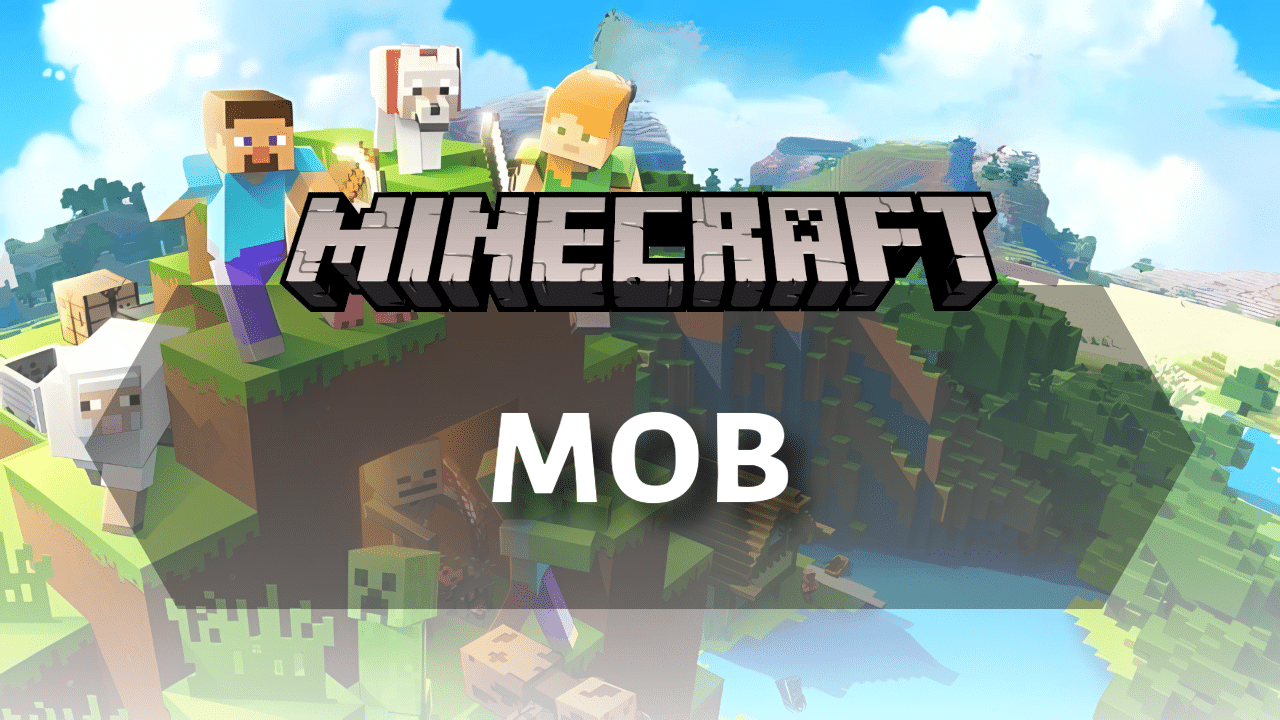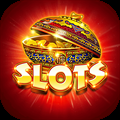
Introduction
Welcome to the Minecraft Bedrock Mob Guide ! Mobs are artificial intelligence-driven entities that inhabit the world of Minecraft and play a crucial role in the gameplay experience. They can be categorized based on their behavior towards players: passive, neutral, hostile, and boss mobs. This guide will provide an overview of the different types of mobs found in Minecraft Bedrock Edition, drawing on the information from your provided sources.
Passive Mobs
Passive mobs are completely harmless. No matter what you do, they won’t attack—even if you provoke them. Some will run away when they spot you, but they never fight back. Many passive mobs can be tamed or bred by feeding them specific items like wheat, carrots, or beetroots, making them useful for farming resources. These mobs provide valuable materials such as food, wool, and leather, helping with survival. Most passive mobs are safe to be around, but there are rare exceptions, like the pufferfish, which can deal damage if you get too close.
Allay
The Allay is a small, flying, passive mob introduced in Minecraft 1.19. It helps players collect dropped items, bringing back any item matching the one it was given. It dances when near a jukebox and can be duplicated using an amethyst shard.
Axolotl
Axolotls are amphibious creatures found in lush caves and can be captured in a bucket. They attack underwater hostile mobs like drowned and guardians but ignore turtles and players. Axolotls come in five different colors, with the blue variant being the rarest.
Bat
Bats are small, ambient creatures that spawn in dark areas such as caves. They do not interact with players or drop items, making them more of an atmospheric addition. Their presence helps indicate nearby caves when mining.
Cat
Cats spawn in villages and swamp huts, appearing in different colors. They can be tamed with raw cod or salmon, and a tamed cat will follow the player. Cats scare away creepers and phantoms, making them useful for base defense.
Chicken
Chickens are small farm animals that drop feathers, raw chicken, and eggs. They lay eggs regularly, which can be thrown to spawn more chickens. Chickens can be bred with any type of seed, making them easy to farm.
Cod
Cod are fish mobs that swim in oceans and are often caught with a fishing rod. They drop raw cod when killed, which can be cooked for food. Cod can be used to tame cats or feed dolphins.
Cow
Cows are a major food and resource source in Minecraft, dropping leather and raw beef. They can be milked using a bucket, which removes status effects when consumed. Cows are bred using wheat, making them a key part of farming.
Donkey
Donkeys are similar to horses but can be equipped with chests for extra storage. They have lower speed than horses but are useful for carrying supplies on long journeys. They can be bred using golden apples or golden carrots.
Fox
Foxes are nocturnal animals that spawn in taiga biomes. They can hold items in their mouths, sometimes stealing food from the player. Breeding two foxes with sweet berries produces a baby fox that trusts the player.
Frog
Frogs spawn in swamp biomes and come in three variants based on biome temperature. They eat slimes and magma cubes, with the latter dropping froglights in different colors. Frogs can be bred using slimeballs.
Glow Squid
Glow squids are found in deep, dark underwater areas, emitting a glowing effect. They drop glow ink sacs, which can be used to create glowing text on signs. Unlike regular squids, glow squids do not spray ink to escape.
Horse
Horses are rideable mobs that can be tamed and saddled. They come in different colors and have varying speeds, jump heights, and health. Horses can be bred using golden apples or golden carrots.
Mooshroom
Mooshrooms are cow-like mobs found only in mushroom biomes. They can be sheared to become regular cows and drop mushrooms when sheared. Milking a mooshroom with a bowl gives mushroom stew, a renewable food source.
Mule
Mules are a hybrid between a horse and a donkey and cannot breed further. Like donkeys, they can carry chests for storage. They inherit speed and jump height randomly from their parents.
Ocelot
Ocelots are wild cats found in jungles, which can no longer be fully tamed. However, feeding them raw fish earns their trust, preventing them from running away. They naturally scare away creepers, making them useful pets.
Parrot
Parrots spawn in jungle biomes and come in five color variants. They mimic the sounds of nearby mobs, helping warn players of danger. Parrots can be tamed using seeds and will perch on the player’s shoulder.
Pig
Pigs are farm animals that drop raw porkchops when killed. They can be ridden using a saddle and controlled with a carrot on a stick. Breeding pigs requires carrots, potatoes, or beetroot.
Rabbit
Rabbits are small, fast mobs that spawn in deserts, taigas, and meadows. They drop rabbit hide, raw rabbit, and rabbit’s foot, which is used for brewing jump boost potions. Breeding rabbits requires carrots, golden carrots, or dandelions.
Sheep
Sheep are farm animals that provide wool and mutton when sheared or killed. They can be dyed different colors, making them useful for decoration. Sheep are bred using wheat.
Skeleton Horse
Skeleton horses spawn during thunderstorms when lightning strikes a horse. They do not require a saddle and can be ridden immediately upon taming. Unlike normal horses, they cannot wear armor.
Snow Golem
Snow golems are player-created mobs that throw snowballs at enemies. They leave a trail of snow wherever they walk, except in warm biomes where they melt. Snow golems are built using two snow blocks and a carved pumpkin.
Squid
Squids are aquatic mobs that spawn in oceans and rivers. They spray ink when attacked, briefly blinding nearby players. Squids drop ink sacs, which are used for crafting and dyeing.
Strider
Striders are passive mobs that spawn in the Nether and can walk on lava. They can be ridden using a saddle and controlled with a warped fungus on a stick. Striders turn purple and shiver when outside lava.
Turtle
Turtles are ocean-dwelling reptiles that lay eggs on beaches. Baby turtles drop scutes when they grow, which can be used to craft turtle shells for underwater breathing. Turtles are bred using seagrass.
Villager
Villagers are passive humanoid mobs found in villages, each with a profession that allows trading. They have different workstations that determine their trades, such as the smithing table for toolsmiths. Villagers can be turned into zombie villagers if infected by a zombie.
Wandering Trader
The Wandering Trader is a special merchant mob that appears randomly with two llamas. It offers varied trades, including rare items, in exchange for emeralds. Unlike villagers, its trades do not refresh.
Neutral Mobs
Neutral mobs won’t attack right away, but they can turn hostile under certain conditions. Usually, this happens if they’re provoked—whether by being hit, stared at (like endermen), or if their young are threatened. Some of these mobs can be tamed or bred, and once tamed, they may even defend you against enemies. Many neutral mobs also provide unique resources, like llamas that carry items or goats that drop horns. Their behavior makes them interesting because they sit between completely peaceful creatures and full-on hostile enemies.
Bee
Bees are flying insects that spawn near flower-filled biomes and beehives. They collect pollen from flowers and return to their hive to produce honey, which can be harvested using a bottle or shears. Bees become hostile and sting the player if their hive is attacked, dying shortly after.
Cave Spider
Cave spiders are smaller and more dangerous than regular spiders due to their poisonous bite. They spawn in abandoned mineshafts near spawners, making them a frequent cave hazard. Unlike regular spiders, cave spiders can fit through smaller gaps due to their size.
Dolphin
Dolphins spawn in ocean biomes and interact with the player in unique ways. They grant the Dolphin’s Grace effect, increasing swimming speed if the player swims near them. Dolphins lead players to underwater ruins or shipwrecks if fed raw cod or salmon.
Enderman
Endermen are tall, black creatures with purple eyes that can teleport. They are neutral unless provoked by direct eye contact or an attack. Endermen drop ender pearls, which are used for teleportation and accessing the End dimension.
Goat
Goats spawn in mountain biomes and are known for their high jumps and ramming behavior. They will charge at players or mobs if provoked, knocking them back. Goats can drop goat horns, which make sounds when blown.
Iron Golem
Iron Golems are protectors of villages and attack hostile mobs on sight. They can be built by players using four iron blocks and a carved pumpkin. Iron golems drop iron ingots and poppies upon death.
Llama
Llamas are neutral mobs that can be tamed and used as pack animals. They spit at wolves and aggressive mobs but do not attack players unless provoked. Llamas can be equipped with a carpet for decoration and a chest for extra storage.
Panda
Pandas spawn in bamboo jungles and have various personalities, such as playful, lazy, or aggressive. They eat bamboo and will roll around when happy. Pandas can sneeze, sometimes dropping slime balls.
Piglin
Piglins are humanoid mobs found in the Nether that trade with players when given gold ingots. They become hostile if the player isn’t wearing at least one gold armor piece. Piglins fear soul fire and turn into zombified piglins if they enter the Overworld.
Polar Bear
Polar bears spawn in snowy biomes and are neutral unless their cubs are threatened. They can swim very fast, making them formidable in icy waters. Polar bears drop fish when killed.
Spider
Spiders are neutral during the day but become hostile at night. They can climb vertical surfaces and are excellent ambush predators. Spiders drop string and spider eyes, which are used in brewing.
Trader Llama
Trader Llamas spawn alongside Wandering Traders and serve as their mounts. They act similarly to regular llamas but are hostile toward attackers, spitting at threats. If a Wandering Trader dies, the llamas become free-roaming.
Zombified Piglin
Zombified Piglins are undead versions of Piglins that spawn naturally in the Nether or when Piglins enter the Overworld. They attack in large groups if provoked, making them dangerous in numbers. They drop gold nuggets, rotten flesh, and sometimes gold ingots or swords.
Hostile Mobs
Hostile mobs are aggressive by default. The moment they detect a player, they attack. These mobs typically spawn at night or in dark areas like caves, making them a constant threat in survival mode. To deal with them, players need armor, weapons, and sometimes even strategic defenses like traps. While fighting hostile mobs is dangerous, it’s also rewarding, as they drop useful loot and experience points. Unlike other mobs, they can’t be tamed, ridden, or made peaceful. Some hostile mobs even appear in combinations, like spider jockeys (skeletons riding spiders) or chicken jockeys (baby zombies riding chickens), making them even harder to fight.
Blaze
Blazes are fiery mobs found in Nether Fortresses. They shoot fireballs from a distance and drop blaze rods, a key ingredient for brewing and entering the End. Blazes are resistant to fire and lava but take extra damage from snowballs.
Creeper
Creepers are silent, explosive mobs that detonate when near a player. If a charged creeper (struck by lightning) explodes, it drops mob heads from nearby creatures. Creepers fear cats and ocelots, avoiding areas with them.
Drowned
Drowned are underwater zombies that spawn in oceans, rivers, and swamps. Some drowned spawn with a trident, making them a deadly threat. They drop nautilus shells, tridents, and gold ingots.
Elder Guardian
Elder Guardians are massive fish-like bosses found in Ocean Monuments. They apply Mining Fatigue to players, making them difficult to fight. Killing all three Elder Guardians in a monument allows players to loot the treasure room safely.
Endermite
Endermites are tiny hostile mobs that occasionally spawn when a player uses an ender pearl. Endermen attack Endermites on sight, making them useful for Enderman farms. They despawn after a few minutes unless named.
Evoker
Evokers are powerful spellcasters that summon Vexes and cast Fangs, which damage players. They are found in woodland mansions and raids. Killing them drops a Totem of Undying, which prevents death once.
Ghast
Ghasts are giant floating mobs in the Nether that shoot explosive fireballs. They drop ghast tears, used for brewing regeneration potions. Their fireballs can be reflected back using any projectile or melee attack.
Guardian
Guardians are hostile fish mobs found near Ocean Monuments. They fire laser beams at players, dealing high damage. Guardians drop prismarine shards and crystals, used for crafting.
Hoglin
Hoglins are large boar-like creatures in the Nether that drop pork and leather. They are afraid of warped fungus and can be bred with crimson fungus. Unlike Piglins, they do not turn into zombified variants.
Pillager
Pillagers are hostile raiders that attack villages and players. They wield crossbows and attack in groups. Killing a pillager captain triggers the Bad Omen effect, which starts a raid upon entering a village.
Ravager
Ravagers are massive beasts that appear during raids. They can destroy crops and deal heavy damage to players. Ravagers drop saddles when killed.
Shulker
Shulkers are living shells found in End Cities that shoot homing projectiles. Their attacks cause levitation, making them dangerous in high places. They drop shulker shells, used to craft Shulker Boxes for storage.
Stray
Strays are skeleton variants found in snowy biomes. Their arrows apply Slowness to players, making them harder to escape. They drop arrows of slowness, useful for combat.
Vex
Vexes are flying ghost-like mobs summoned by Evokers. They can pass through walls and deal high melee damage. Despite their small size, Vexes are one of the deadliest mobs in the game.
Boss Mobs
Boss mobs are a special type of enemy that don’t appear naturally. Instead, players have to summon or trigger them under specific conditions. These mobs are designed to be much stronger than regular enemies, requiring preparation and strategy to defeat. The reward for taking them down is usually something rare and powerful, along with a large amount of experience points. Since they’re meant to be major challenges, boss mobs don’t spawn often, making each fight a unique event. Some mobs, like the ravager from village raids, aren’t officially classified as bosses but are still considered boss-like because of their power and unique behavior.
Wither
The Wither is a player-summoned boss that fires explosive skulls. Upon spawning, it creates a massive explosion and gradually gains armor as its health lowers. It drops a Nether Star, used for crafting a beacon.
Ender Dragon
The Ender Dragon is the final boss of Minecraft, found in The End. It flies around Ender Crystals, which heal it. Defeating the Ender Dragon grants a large amount of XP and allows access to the End gateway.
Conclusion
Understanding mob behavior is key to surviving and thriving in Minecraft. Passive mobs offer vital resources for food, materials, and companionship, while neutral mobs add unpredictability, requiring caution and smart taming. Hostile mobs pose constant threats, demanding strong defenses and combat skills, and boss mobs provide the ultimate challenge with rare rewards. Mastering how each mob type acts allows players to explore, gather resources, and defend themselves more effectively, making the game deeper and more rewarding.
If you’re looking for more guides, be sure to explore the website for more tips and tricks. Enjoy your adventure, and happy mining!
Frequently Asked Questions(FAQs)
What is the rarest mob in Minecraft Bedrock?
The rarest mob in Minecraft Bedrock Edition is generally considered to be the Brown Mooshroom.
How do I increase mob spawn rates in Minecraft Bedrock?
Lower light levels, spawnproof surrounding areas, build high in the sky, stay within 24–128 blocks of the spawn zone, and play solo to avoid splitting mob spawns.













